Isfahan History
Isfahan is one of the world’s most beautiful cities, an unforgettable international tourism destination popular all of over the world, an encyclopedia of Iranian and Islamic civilization, locally famous as half of the world. Isfahan presents the real Persian character, the most glorious in historical and architectural wealth. Monuments in Isfahan are great examples of our art and architecture.
About Isfahan
"Isfahan Nesf-e-Jahan" Isfahan is half the world
This well-known saying was originally coined to describe Isfahan in Safavid times, when the city was at the height of its glory Even today, Isfahan remains one of Iran's most beautiful cities and its monuments can be ranked among the most splendid of the Islamic world The atmosphere in town is a relaxed one: this is a place to wander in, to get to know slowly, with its gardens, its river side, and its shopping streets.
THE SAFAVID ROYAL CITY
The central of Isfahan city during the Seljuk period was the Friday Mosque and the Meidan-e Kuhneh, to the north of the present Royal Square. In 1598, Shah Abbas decided to shift this center-according to some, in order to annoy a rich merchant who was reluctant to part with his property-and turned to the Naqsh-e Jahan.
Travelers to Isfahan
Fortunately for a researcher, Isfahan has always remained a halting point for any traveler. A Succession of voyagers, drawn to the country either by commercial interests or by a taste for exploration, has left valuable ac-counts of Esfahan's glorious past.The first comprehensive picture of the city is given by Naser Khosrow (1004-1088), the celebrated Persian poet, philosopher, and Ismailite propagandist. After his visit to Esfahan in 1052, he wrote in Snfar-Nal11eh ("Travelogue") Naghsh-e-jahan Sq.
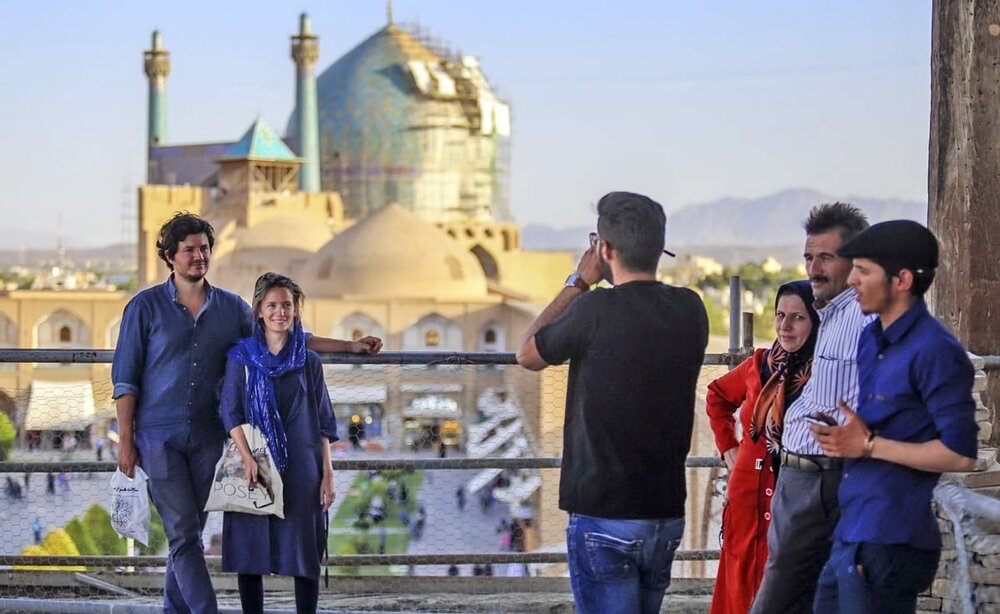
Travel to Iran without Isfahan is not complete
According to tourists who visited Iran and Isfahan, it is one of the most beautiful and most visited cities in Iran. It seems that there’s something in Isfahan that makes the city so likable.As it’s got some of the highlights of a trip to Iran, the absolute majority of tour operators plan the itineraries in a way that Isfahan is the first or the last stop before leaving Iran.
Isfahan the Persian Florence
Isfahan is a city that different parts of Iranian identity represented by it.
An identity that owes its reputation to Iranian cultural and artistic traditions especially the city of Isfahan.Isfahan among the cities of Iran is like a piece of jewelry that has kept its Glory, Shines, and greatness despite its historical fluctuations for centuries.
Isfahan was declared in 2015 by UNESCO as one of world's "Creative Cities"
The city is so animated as if started life just recently and so genuine as if has existed for centuries. According to the French author Andre Malraux "only Florence and Peking are comparable to Isfahan".
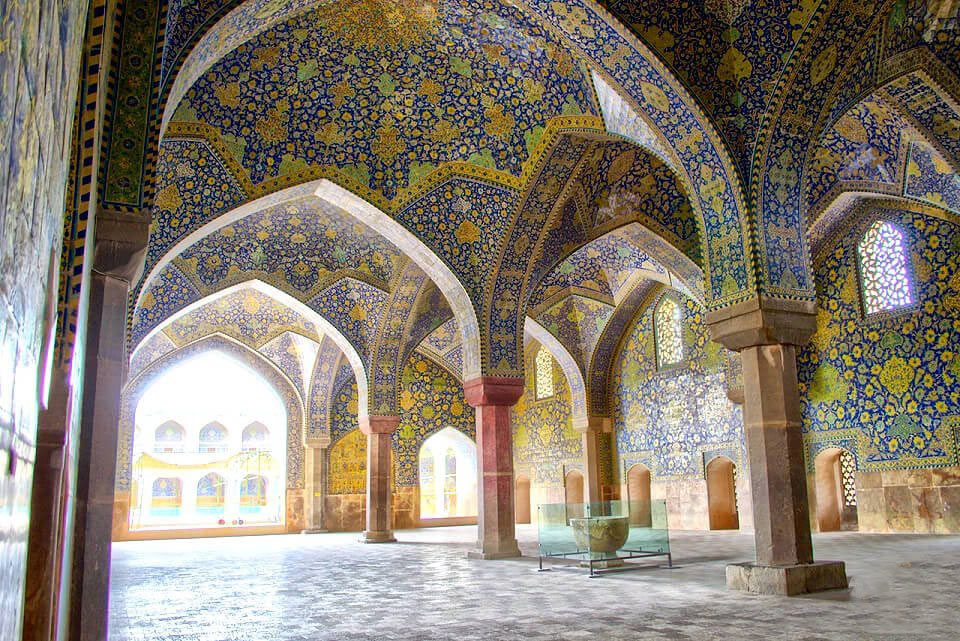
21 interesting facts about this city :
1. Isfahan is the third-largest city in Iran after Tehran and Mashhad.
2. In 2015, Isfahan and Rasht were the first cities in Iran to join the World Creative Cities Network under UNESCO.
3. Naghsh Jahan Square, with a length of 560 meters and a width of 160 meters, is one of the largest squares in the world.
4. One of the old names of Isfahan is Sepahan; Some experts believe that during the Sassanid rule, this city was the gathering place of the armed forces, and the troops of the southern regions of Iran, such as Bakhtiari, Fars, etc. , gathered in this area before moving towards the battlefield. They called this place Espahan, and later the word became known as "Isfahan".
5. Another old name for Isfahan is "Al Yahudiyeh"; When Cyrus the Great conquered Babylon and saved the Jews from the captivity of its king, some of those Jews came to Iran and settled in this area.
6. In 1006 AH, Shah Abbas moved his capital from Qazvin to Isfahan; There were various reasons for this, and one of these reasons was Shah Abbas's great interest in the nature of Isfahan.
7. During the Safavid period, the city of Najafabad was built as a trading city to provide food for the city of Isfahan.
8. From the time of Shah Abbas I until the death of Shah Abbas II, Isfahan was considered the best city in the Middle East. During this period, Isfahan was even bigger and more beautiful than Constantinople (now Istanbul) and had 4 alleys (neighborhoods) with the letters of Abbasabad, Jolfa, Gabarabad, and Isfahan.
9. During the Qajar period and the rule of Massoud Mirza Zol-e-Sultan (son of Nasser al-Din Shah), more than 50 historical monuments and Persian gardens in Isfahan were destroyed.
10. Most of the historical monuments that remain in Isfahan belong to the Islamic era. Among the pre-Islamic buildings in Isfahan, we can mention the fire temple in Atashgah Mountain.
11. Isfahan was at the peak of its glory and beauty during the Seljuk and Safavid eras, and today its most magnificent monuments and historical monuments belonging to these eras.
12. Naghsh Jahan Square was built during the reign of Shah Abbas in Isfahan.
13. The ram and the ewe are known as the animal symbol of Isfahan.
14.One of the reasons why Isfahan is called "half the world" is that the city has more than six thousand historical monuments that are hundreds or even thousands of years old.
15. The third day of Ordibehesht (Around May), which is Sheikh Baha'i's birthday, has been named Isfahan's day.
16. Today, most Jews in Isfahan live on Ferdowsi Street, Amadagah, and Seyed Alikhan, but most of them have emigrated abroad.
17. Julfa is located in the south of Isfahan and is the area where most of the city's Armenians live.
18. Most of the churches in Isfahan are located in the Jolfa region.
19. Isfahan's Jolfa neighborhood is 400 years old and still retains its historical texture.
20. Isfahan's Hagop Church is the oldest church in the city.
21. Isfahan has 16 city sisters: Tabriz, Yazd, Neishabour, Xi'an in China, Kuala Lumpur, Florence in Italy, St. Petersburg in Russia, Yash in Romania, Barcelona in Spain, Yerevan in Armenia, Kuwait City in Kuwait, Freiburg in Germany, Havana in Cuba, Lahore in Pakistan, Dakar in Singapore, Baalbek in Lebanon.
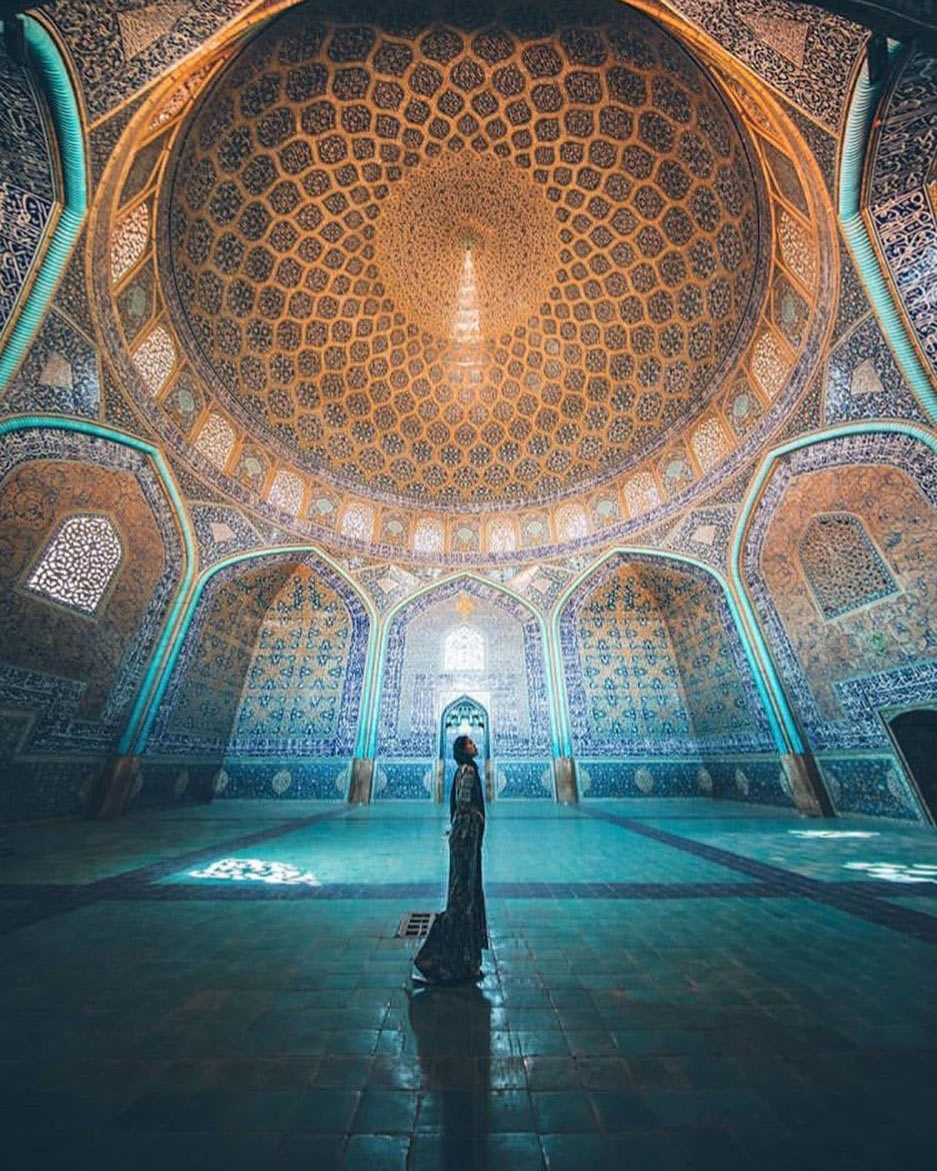
Main Tourist Attractions
Naghsh-e Jahan Square ( Imam Square ) , Ali Qapu Palace, Sheikh Lotfollah Mosque , Si-o-se-pol Bridge, The Monar Jonban (Shaking Minarets), Flower Garden, Hasht Behasht Palace (Eight Paradises), Zayandeh-Rood River. Fire Temple, Khaju Bridge, Qeysarie bazaar, Chahar Bagh...
Naghshe Jahan Square (Imam Square)
Naghsh-e Jahan Square (Design of the world) officially known as Imam Square, situated at the center of Isfahan city, Iran. It is an important historical site and one of UNESCO's WORLD HERITAGE SITES . The square is surrounded by buildings from the Safavid era. The Imam Mosque is situated on the south side of this square. On the west side you can find Ali Qapu Palace. Sheikh Lotf Allah Mosque is situated on the eastern side of this square and the northern side opens into the Isfahan Grand Bazaar. Today, Namaaz-e Jom'eh (the Muslim Friday prayer) is held in this square in front of the Imam Mosque.It was Shah Abbas the Great who made Isfahan his capital and then decreed that the square should be extended to its present size, and lovely buildings set around it. The length of this great square, which is actually rectangular, is 500 meters from north to south, and its width about 150 meters from east to west. It was laid out and beautified in the reign of Shah Abbas the Great, at the beginning of the seventeenth century.From that time until sixty years ago the square presented a very different aspect from the square to day. The whole area of the square within the limits of the water channels round it was quite level, while to the north and south stood two goal posts for the game of polo. Those two goal posts are still in position but replanning with large pool in the center, and lower beds round has transformed the square and given it a completely new look. Most of the buildings round are two-storied and the alcoves simply decorated.
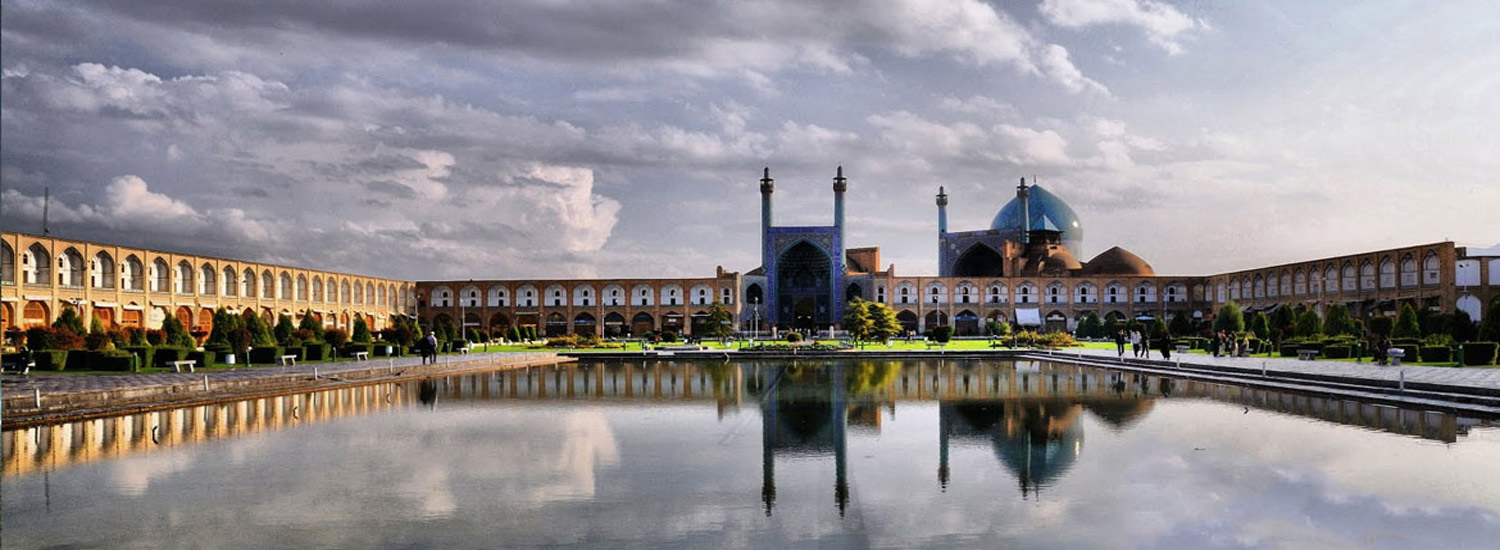
Ali Qapoo Palace
At the west of Imam Square (Naghsh-e Jahan), just in front of the Sheikh Lotfollah mosque, one of the most magnificent palaces of 17th century is located. The Ali Qapu palace is well-known palace all over Iran. The first part of palace was built in 1597. It was used as a residential palace. Shah Abbas the great, ordered to construct the palace on the site of palace and garden from the Timurid time. Shah Abbas’s palace was a four floors with a veranda. Shah Abbas the second, expanded the palace and a music hall (room) was constructed on the top of palace. The palace is about 38 meters high, the loftiest and tallest building in the 17th century. There are 52 rooms, but because a long restoration most of rooms are closed to visitors.Iranian empire, in 17th century was a serious rival to Ottoman Empire. European countries wished to create hostility between two empires. Their plans and plots were successful. In Istanbul of 17th century there was a palace with the same name.Some of Isfahanologists believe that Shah Abbas the great highly respected the first Shiite Immam Ali. On the other hand Qapu is a Turkish word means,” the magnificent door.”
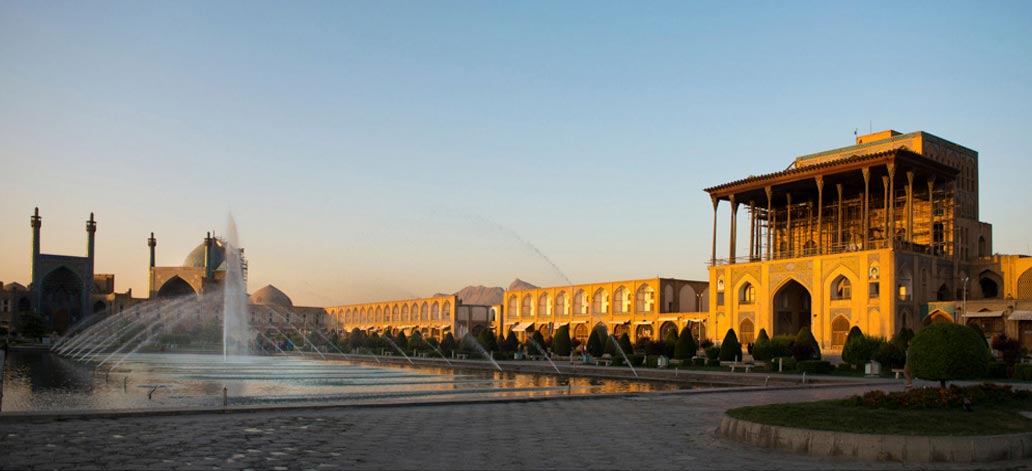
Sheikh Lotfollah Mosque
Sheikh Lotfollah was built between 1603 and 1619 as a part of Naqsh-e Jahan Square complex by decision of Shah Abbas. Since Ali Qapu Palace, located on the west side of the square, was a residence of the Shah and his family, the complex needed a mosque that would be appropriate for the Shah to pray and also comply with the beauty and majesty of the square. Unlike the Imam Mosque, which was designed for public praying, Sheikh Lotfollah Mosque was the private mosque for the family of Shah Abbas. The doors of the mosque were always closed and guarded, so ordinary people could admire the mosque only after centuries. To avoid being seen while crossing the square from Ali Qapu Palace to the mosque, Shah and his wives used a tunnel under the square.
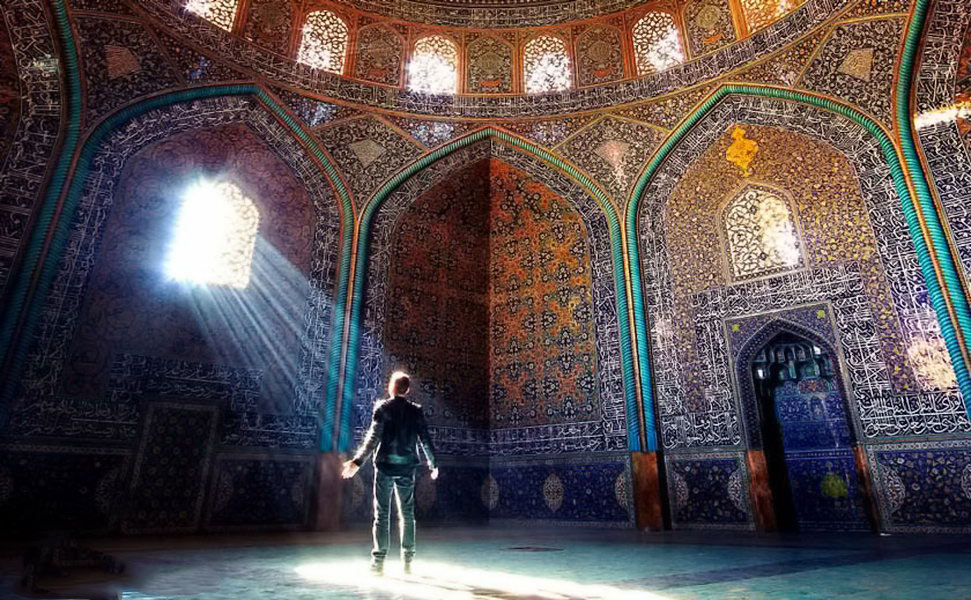
Shah Mosque
The Shah Mosque in Isfahan is one of the most famous architectural buildings of Iran, it is even so famous that you can find the building portrayed on the 20K Rial bill. The construction of this mosque started in the early 17th century and is beautifully decorated with seven colored wall tiles, creating stunning mosaic patterns and calligraphy. You could wander around the mosque for days, simply staring at the different patterns to be found on the wall, and don’t forget to look up, as some of the most beautiful architecture is actually located on the ceiling. Under the central dome, right in the middle, you will find a stone that is not matching with the stone around it. This stone marks an important acoustic point in the Shah Mosque. From here the sound echoes loudly through the rest of the building, allowing the imam to speak at a lower volume but still be heard by everyone in the mosque. You can test the phenomenon out yourself by for example stamping on the ground on the stone, standing on the stone and clapping your hand or by dropping a book on the stone, you will hear the loud sound echoing through the mosque, something that seems to be tested by many of the touristic visitors of the mosque.
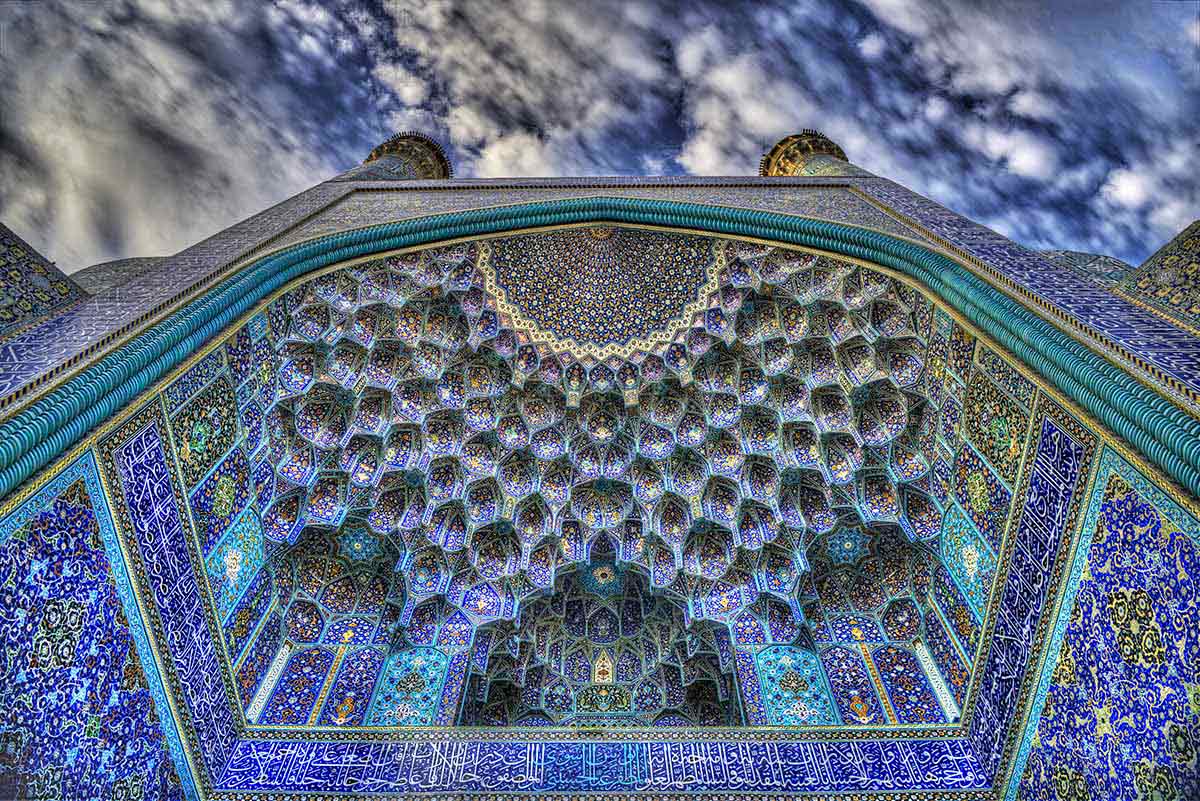
Jameh Mosque
This 1000-year-old mosque is the oldest and the biggest mosque in Iran and the first mosque to adopt “the four Iwan” plan. The mosque has splendid 15th-century mosaics on the sidewalls and four yards each one contrasting another. It still continues to be used as a place for prayers. This UNESCO WORLD HERITAGE SITE , is a representative and outstanding example of Islamic architecture of Seljuqs, Mongol and Safavid eras. It was reconstructed and removed adequately several times, once due to a fire happened in the 12th century which destroyed the huge, magnificent library of “Khaje Nizam-Ol Molk Toosi” and once due to an air raid in 19th. You can visit this amazing place from 9 AM to 7 PM. It also worth to pay for a guide, who can show you the tombs, prayer places, and hidden rooms.
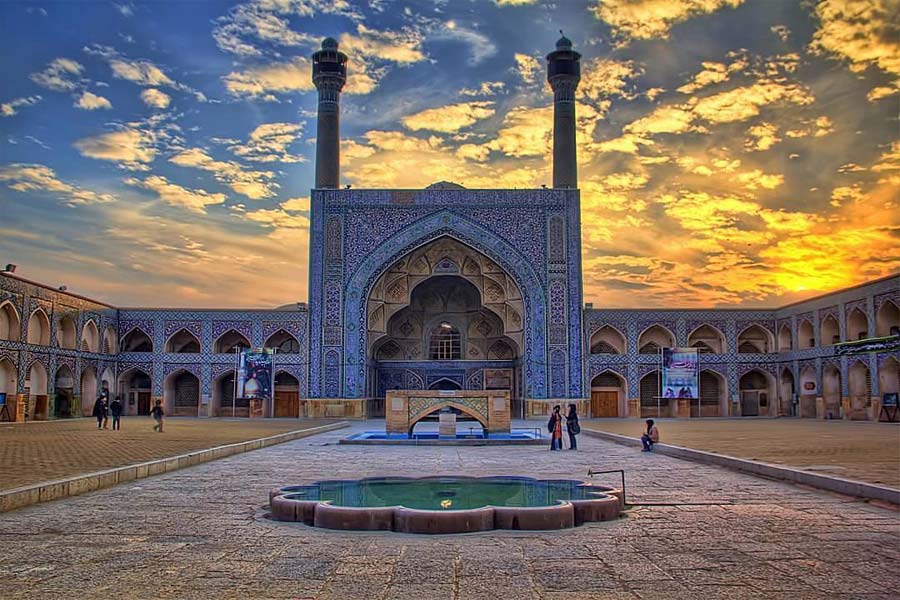
Monar Jonban (Shaking Minarets)
Monar Jonban belonging to the Mongol time. Monar Jonban, is a shrine over the tombstone of Amu (Uncle) Abdollah. Monar Jonban is considered as one of the most popular monuments of Isfahan for its wonderful architecture. It is located in far west of Isfahan. the twin symmetric minarets are more than a masterpiece. The High architectural knowledge of its architects is reflected in the mysterious structure of the minarets. The main distinguished feature of this monument is that by shaking strongly one minaret, the other minaret starts shaking with the same frequency. it also can be felt in the whole structure slightly. According to the latest research that has been done, the reason that the other minaret vibrates automatically after the other one is shaken is the “U-shape” structure of the building. There are also other points of view to this matter but the mystery is still unsolved. Presently, no one except for the special guard is allowed to climb up the narrow spiral staircase in the minaret to open arched summit and shake the minaret. A bowl of water can be put over the tomb so that with the waves forming on the surface of the water you can actually see the vibration. The whole iwan is decorated with Inlaid mosaics with wavy lines and polygonal azure tiles. Dark blue tiles cover the inner side of its arch. Over the years, this remarkable monument has aroused admiration in the heart of travelers.
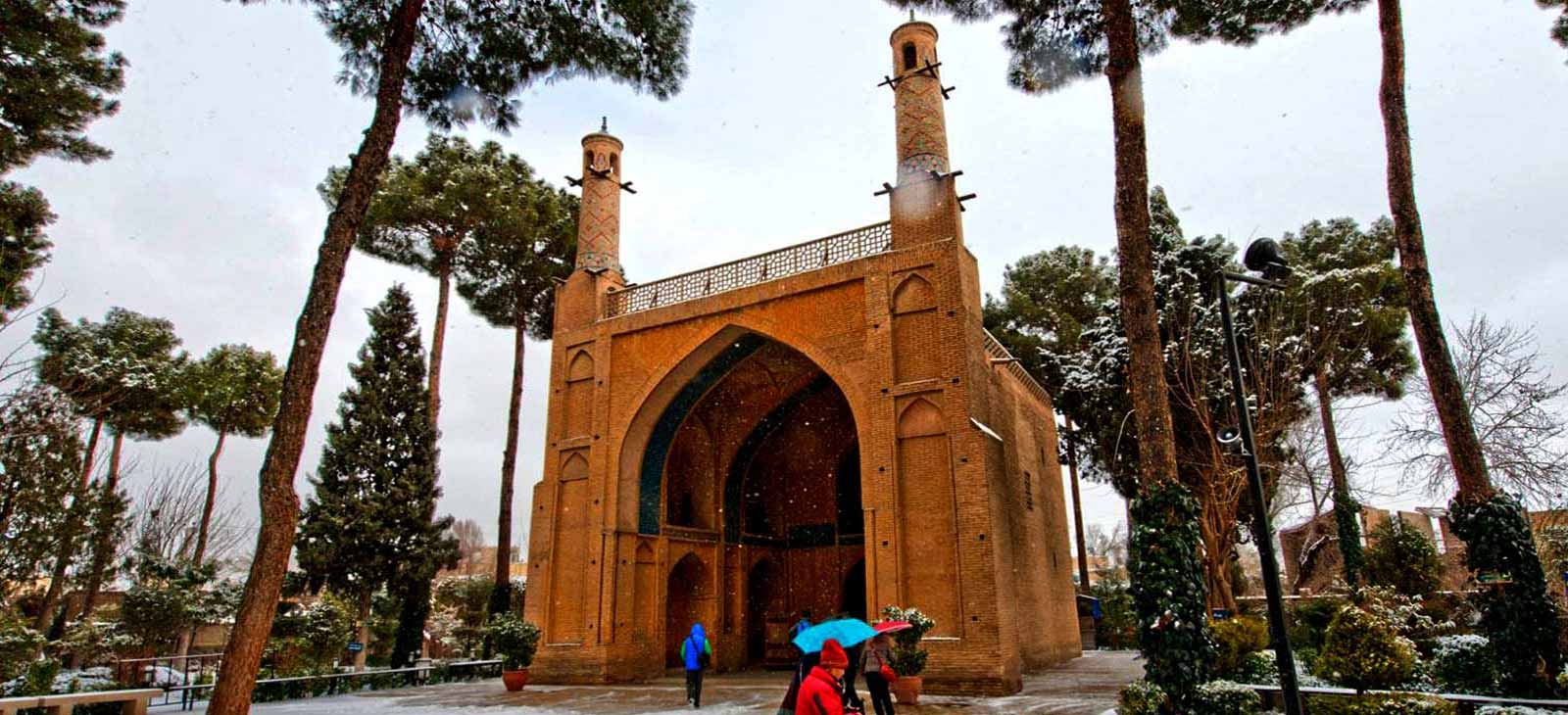
Sio-Se-Pol Bridge
Si-o-se Pol Bridge is a stone double-deck arch bridge in Isfahan, Iran. It is also called Siose Bridge (which in Persian means “33 Bridge” or “Bridge of 33 Arches”) or Allah-Verdi Khan Bridge. Si-o-se Pol Bridge is built by the chancellor Allahverdi Khan Undiladze on commission from from Shah Abbas whose chancelor he was. Construction of the bridge began in 1599 and ended 1602. Bridge is long 298 meters and wide 13.75 meters. It has 33 spans from which it gets its name with the longest span of 5.6 meters, crosses Zayandeh River and is located in the southern end of Chahar Bagh Avenue. Bridge has a large plane at the beginning of the bridge where Zayandeh River flows faster. There it has more arches making with that a suitable place for a tea house that can be accessed from the southern bank. There are two levels of arches. Lower level has 33 arches while upper has two arches above lower lever arch and one arch above pier. Road that goes on the upper level is bounded by two high walls that protect travelers from winds and pedestrians that can walk there, from falling.
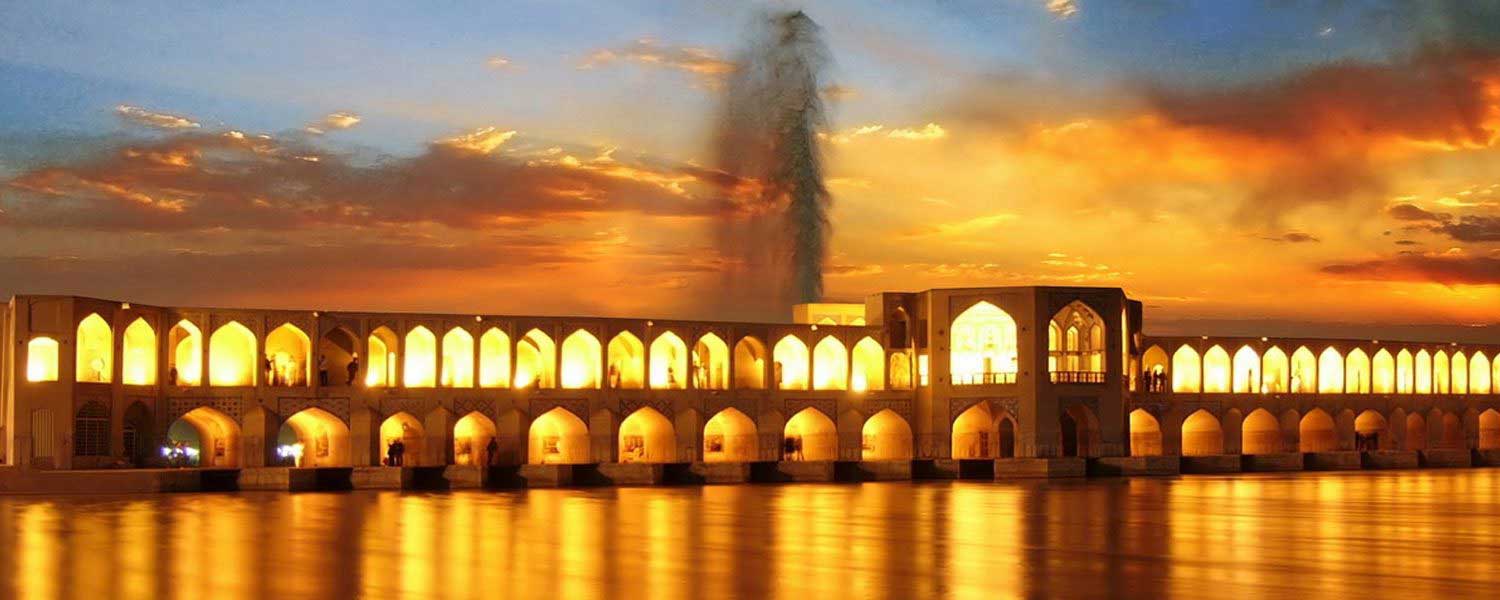
Vank Cathedral Church
The most memorable church in Julfa, the Vank (in Armenian, the general word monastery Church is also referred to as the Cathedral of All Saviors. It is the most important architectural and artistic treasure of the Armenian Christians in Isfahan. The construction of the cathedral began during the reign of Shah Abbas II. However, only several years after its completion, it was rebuilt, and this time the process lasted for nine years. The Armenian community provided the building expenses, while the interior paintings were accomplished with the financial assistance of Khajeh Avadich Stepanusian. All of the paintings are the work of Armenian craftsmen, who learned their craft in Europe and were obviously influenced by Dutch and Italian masters. The dados of the church's inner walls are covered with rich ceramics dating from 1710-1716. Inside and outside the church, there are also many inscriptions that invite the readers to pray for the constructor of the church and his descendants. The portal inscription is in Armenian and contains the name of Shah Abbas II and the dates of 1104 and 1113 of the Armenian calendar (1692 and 1701 A.D.) as the dates of the commencement and completion of the church. The freestanding square belfry is located in front of the entrance to the building. There is also a graveyard occupying a part of the church's courtyard. Among the most important persons buried here are Archbishop Khachatur Gesaratsi, the founder of the first Iranian printing-house, and Archbishop David, the founder of the present structure of the Yank Church. There are also the graves of Sir George Malcolm, an English colonel, Alexander Discover, Russian consul, and director of the Imperial Russian Bank in Iran, and Andrew Jukes, an English doctor and a representative of the East Indian Company in 1804. The grounds surrounding the Vank Church also comprise a museum, a library, and an administrative section. The two-story building of the museum houses antiquities, relating mainly to the history and religion of the Armenians in Julfa. The museum's collection contains more than 700 richly illuminated manuscripts, among them ancient Gospels (the earliest dating from the 9th century) and Korans, as well as the first book that was printed in Iran. Other objects include wooden crosses, tabernacles, monstrances, and other sacred receptacles, and paintings bought in Europe by Armenian merchants. Just behind the entrance to the hall, the visitor can read under a microscope a passage from the Proverbs that is written on a hair. To the right of the entrance is an interesting collection of royal orders issued by the Safavid kings. Ladies will perhaps enjoy seeing the costumes of Safavid times, as well as samples of leatherwork, embroideries, and tapestries. Here are also exhibited a printing press dated 1841 (the third oldest in Iran) and several religious books that are among the first to be printed in Julfa. In the left-wing of the hall is exhibited the world's smallest book - The Lord's Prayer - printed on 14 pages in Germany and weighing 0.7 g, as well as the 15th-century Monolagium weighing about 16.5 kg. The paintings include Greek, Indian, Italian, Flemish, Russian, and Armenian art, ranging from the 16th to the 20th century. Among them is Rembrandt's sketch of Abraham. To the left from the entrance is an imposing stand dedicated to the Armenian genocide of 1915. The museum's second floor is especially notable for the remains of the demolished Aineh-Khaneh Palace (p63). Here are also preserved documents dealing with the Armenian participation in the Constitutional Revolution in the early 20th century as well as the personal belongings of their leader, Yeprem Khan. Some Persian tile work, engraved stones, coins, and money boxes, and Egyptian linen used in the coffin of a mummy complete the exhibition.
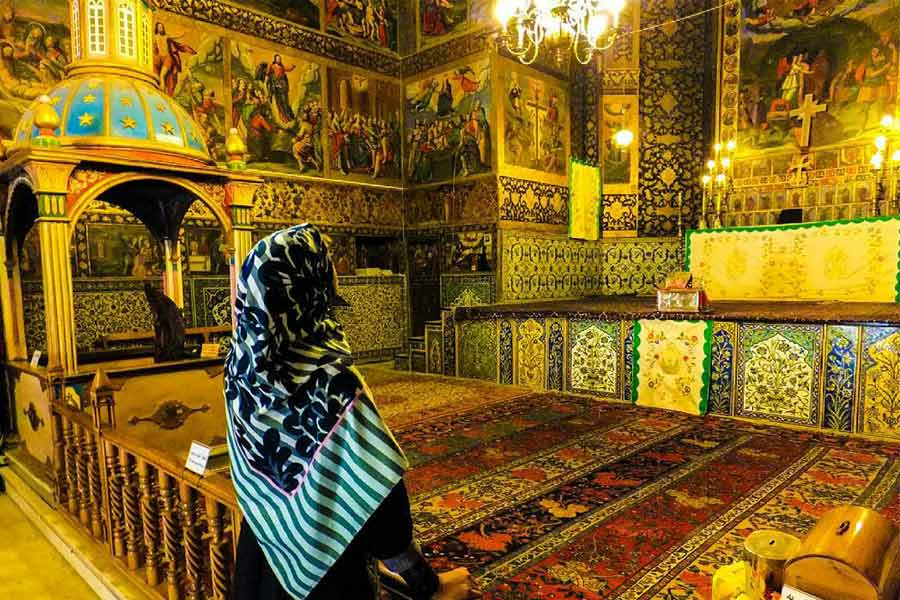
Chehel Sotoun
Chehel Sotoun, literally meaning forty columns, is a royal pavilion that was built by Shah Abbas I as a place to receive ambassadors and international guests. It was in the time of Shah Abbas II, however, that the palace was upgraded to include several of its famous features, including the Mirror Hall, the 18-Sotoun Hall, and the paintings on the walls. Inside the palace, you can find various paintings and frescoes on ceramic. They depict historical scenes such as the famous Battle of Chaldiran between Iran and the Ottomans, Shah Abbas I in his special crown, and the reception of an Uzbek King in 1646, among many others. The Chehel Sotun Palace, along with eight other gardens, is registered as a UNESCO WORLD HERITAGE SITE under the name of the Persian Gulf.
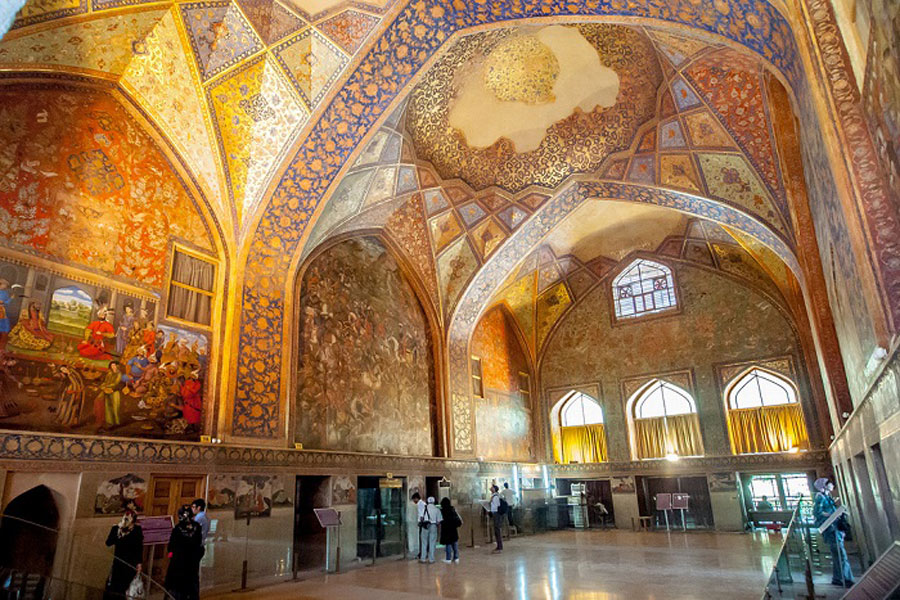
Mollabashi House
Mollabashi House is one of the most beautiful monuments in Isfahan which dates back to the Zand and Qajar dynasty. Mollabashi was one of the most popular astronomers of his time, and this house was purchased by him during the rule of Zell-e Soltan in Isfahan. Mollabashi house is divided into 3 parts: the Exterior courtyard, Tabestan neshin (Summer-Alcove) and Inner courtyard. And it's decorated with the art of metalwork on wood with a traditional Persian atmosphere . Today, the house is registered on the NATIONAL HERITAGE LIST and a lot of travelers visit this amazing monument annually.
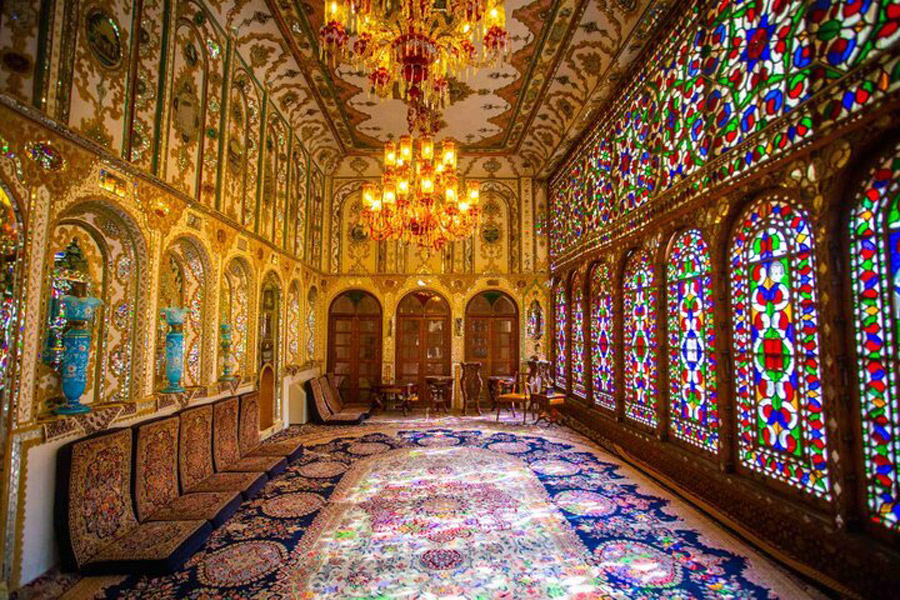
If you are planning to choose Isfahan city tours or Isfahan day tour, you are in the right place. We offer exclusive Isfahan tour packages. Our main purpose is to expose you to Iran’s rich history and let you experience Iranian culture.
text us and book your own Isfahan's city tour or Isfahan day tour